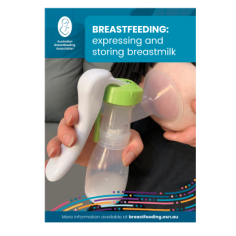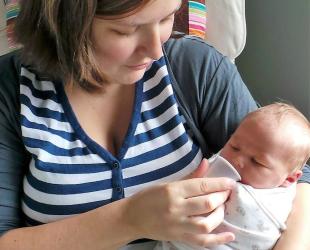Some breastfed babies take a while to get used to feeding when not at the breast

Some breastfed babies take a while to get used to feeding from a cup or bottle. After all, it will feel and taste very different to your skin. Feeding from a bottle, straw or cup also requires a different action to milking your breast.
If you offer your baby expressed milk you may find that your baby refuses, as they are used to you breastfeeding them. It might help if you are out of sight and leave your partner or other caregiver in charge.
If you are preparing your baby or child for Early Childhood Education and Care, then it can help if they are able to spend time with the caregiver, perhaps including a feed time. If the caregiver is the only person to give your baby expressed milk, your baby will get used to this and may accept it more easily.
Some tips to help your baby feed when you are apart:
Choose the time
-
Offer the milk as soon as baby shows feeding cues rather than waiting until they are very hungry and crying.
-
Try feeding at different times eg as soon as baby wakes up, when they are sleepy (perhaps in place of a dummy) or in between feeds when baby isn’t too hungry.
-
Have some clothing that smells of mum so baby can cuddle into this while feeding.
Make bottle feeding more like breastfeeding
-
Many babies don’t know what to do with a bottle teat. It won’t stretch out like a nipple. You may need to squeeze the teat to begin with so that some milk flows into baby’s mouth.
-
Stroking the teat downwards on your baby’s mouth may encourage them to open their mouth and take the teat.
-
Sometimes you need to try a different type or size of teat to find one your baby likes.
-
Similarly, the flow rates of teats vary. Some babies may prefer a slow flow so it’s more like breastfeeding. An older baby may prefer the milk to come faster.
-
Warm the teat so it’s not cold going into your baby’s mouth.
-
Use paced bottle-feeding techniques.
Try different feeding positions
-
Sometimes a position other than the cradle hold may be more successful. Baby may associate lying down with breastfeeding. You could try having baby sitting up, perhaps facing you. Some babies prefer to face outward on your lap.
-
Gently rock your baby or walk around while feeding.
There are many ways to provide your baby with your milk when they are away from the breast. If your baby isn’t drinking from a bottle, try feeding the EBM in a small cup or from a spoon. You can even take the teat off the bottle and use it as a cup.
Cup feeding works best if you hold your baby in a sitting position and give small sips at first. Older babies may prefer a straw or sipper cup.
If your baby is only needing a small amount of breastmilk, you can add EBM to their food once they are over 6 months.
© Australian Breastfeeding Association April 2022
Read more about preparing and feeding expressed breastmilk




